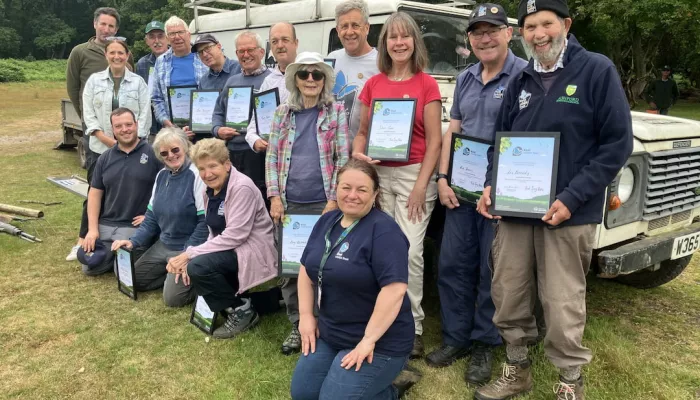Recent sightings on the reserve include the ever-present raptors, buzzard and kestrel, and fledgling birds in deep cover hiding from the above. Also gatekeeper, meadow brown, small copper, skipper, comma, marbled white butterflies, cinnabar moth caterpillars on ragwort, a four banded longhorn beetle and various demoiselles and dragonflies. But as volunteer David Rayner said, ‘The ragwort should have loads of small solitary bees, hoverflies and beetles but the flowers are bare. The lack of insects this year is astonishing.’ We all grimly agreed from our own experience. I hope that the grass I have left to grow long and seed in my garden is sheltering many insect and moth eggs to produce a new generation. A very pregnant lizard was seen basking on a causeway, and will by now have produced up to eleven live young, having incubated the eggs in her body. It seems that the Hothfield lizards are as happy basking on the new wooden causeways as on the old composite ones.
The highland cattle are back after a break browsing sweeter pickings than here, where the grazing is rough and tough, moor grass, sedges, a bit of heather, a bit of gorse. But never bracken. One of the reasons we need volunteers and their scythes!
See volunteering opportunities






